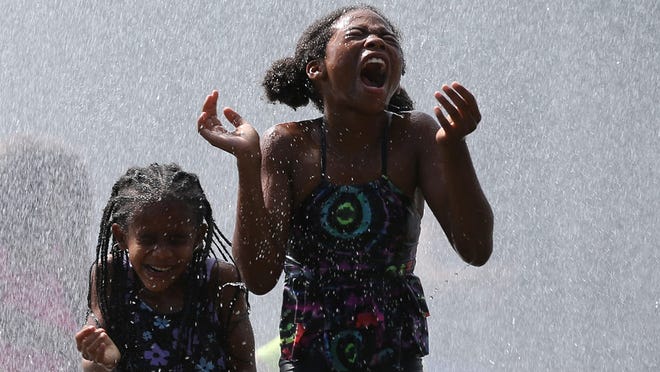A wildfire fanned by strong winds quickly spread to more than 12,000 acres northwest of Los Angeles, forcing the evacuation of at least 1,200 people, authorities said Sunday.
The blaze, dubbed the “Post Fire,” began Saturday afternoon near Interstate 5 in Gorman, about 68 miles northwest of Los Angeles, according to Cal Fire. As of Sunday afternoon, the fire had grown to about 12,265 acres and was 2% contained.
Officials said the cause of the fire is still under investigation.
California State Parks evacuated 1,200 people from Hungry Valley Park in Gorman, where the fire was spreading, Cal Fire said. No homes were damaged, but two commercial buildings were damaged. Los Angeles County Fire Department He said in an update on Sunday.
Hungry Valley Recreation Area and Pyramid Lake Reservoir were closed due to fire fears. Fire crews were also responding to the southern portion of the fire moving southeast toward Pyramid Lake.
Cal Fire said crews were working to build a perimeter firebreak and that aircraft were trying to stop the fire from spreading, but visibility was limited.
Officials warned residents to remain vigilant and prepare to evacuate if there is a change in fire activity.
“Temperatures are expected to increase slightly over the weekend, along with decreasing humidity. Residents are urged to remain vigilant and be prepared to evacuate if there is a change in fire activity,” Cal Fire said in its latest fire summary. “Wind speeds are expected to increase between 9 p.m. and late at night. Gusts will reach 30 mph, with even stronger wind speeds over ridge tops, possibly exceeding 50 mph.”
The National Weather Service in Los Angeles issued a red flag warning for the I-5 corridor until 5 p.m. Monday because of high winds and low humidity, and the California Governor’s Office of Emergency Management said Saturday that it had deployed fire engines and personnel to multiple counties to combat the blazes.
When is wildfire season?
Historically, wildfire season usually starts in July and ends in late November or early December, Luca Carmignani, a fire adviser at the University of California’s College of Agriculture and Natural Resources, told USA Today in 2023. This is the driest time of year, perfect for vegetation to ignite and burn.
“You have dry months where there’s not a lot of rain, and all the grasses and little plants that grew in the spring dry out and are more susceptible to catching fire and burning,” Carmignani said. “And in many parts of the U.S., for example, those months have high winds.”
Carmignani says these conditions will greatly influence how fires behave during this time of year.
Contributor: Kristen Apollin-Castillo, USA TODAY


